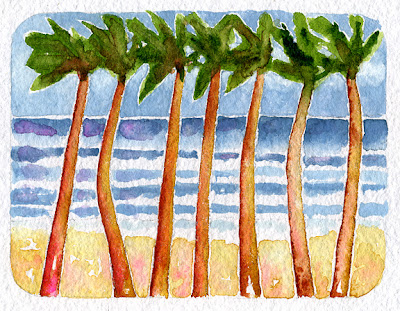From My Mother's Sketchbook, Pencil on paper. Florence "Flossie" McRae
It's been a long time since I've posted. Caring for my Mom as she declined and then dealing with her death absorbed every bit of me for quite a while. She died peacefully. I was with her and I will always be grateful to have had that precious time with her. She was an artist, a watercolor painter of big splashy flowers, birds, and sky reflecting in the sea that she lived beside.
My Mothers Hands, Watercolor on paper, 2012. Peggy Sue McRae
Before she died I photographed her hands. Her long fingers shaped by age, a brilliant manicure and sparkling diamond wedding ring spoke to me of her life, the many tasks those hands engaged in with brilliance and flair. I painted this watercolor from the photographs.











